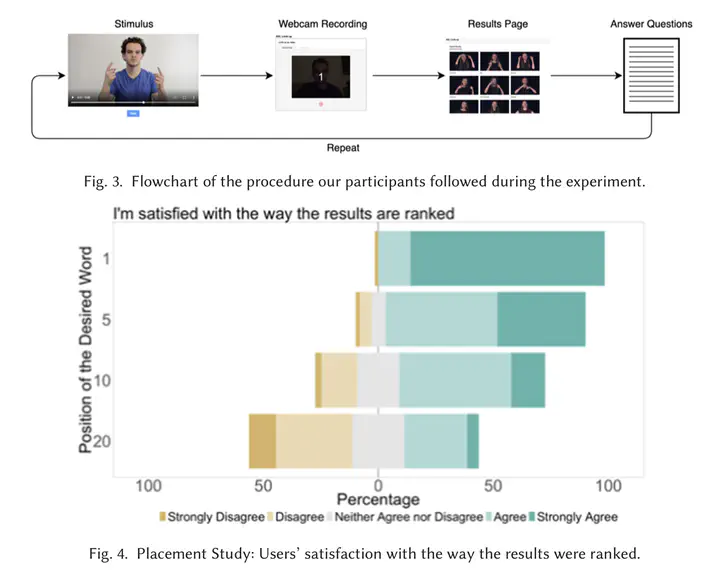Effect of Sign-recognition Performance on the Usability of Sign-language Dictionary Search
 Image credit: Unsplash
Image credit: UnsplashAbstract
Advances in sign-language recognition technology have enabled researchers to investigate various methods that can assist users in searching for an unfamiliar sign in ASL using sign-recognition technology. Users can generate a query by submitting a video of themselves performing the sign they believe they encountered somewhere and obtain a list of possible matches. However, there is disagreement among developers of such technology on how to report the performance of their systems, and prior research has not examined the relationship between the performance of search technology and users’ subjective judgements for this task. We conducted three studies using a Wizard-of-Oz prototype of a webcam-based ASL dictionary search system to investigate the relationship between the performance of such a system and user judgements. We found that, in addition to the position of the desired word in a list of results, the placement of the desired word above or below the fold and the similarity of the other words in the results list affected users’ judgements of the system. We also found that metrics that incorporate the precision of the overall list correlated better with users’ judgements than did metrics currently reported in prior ASL dictionary research.